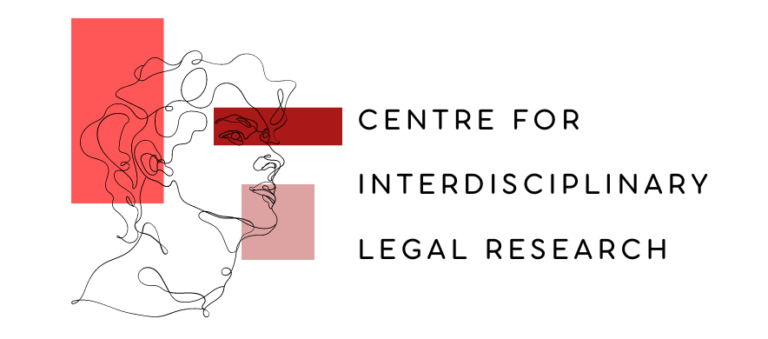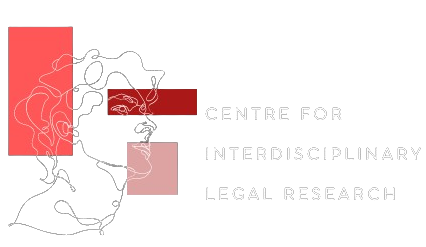
Archival study
To thoroughly reconstruct how the FCC affected legal discourse in three selected case studies (Belgium, Polish territories, and Germany), we will consult the following sources:
(1) Any form of publication by authors commenting on or referring to substantive or formal issues regarding the FCC in the form of, inter alia, monographs, textbooks, articles, collections of court judgments, essays, treatises, comments, diaries, press materials, notes of lectures by university professors, etc.
(2) Codification projects and reports of parliamentary debates on codification;
(3) Materials of governmental bodies concerning partial reforms of the commercial law, e.g., justifications for projects and reports of the parliamentary reporters (stenographic): the originals have not always been preserved.
Nevertheless, to get a complete picture, relevant sources gathered in the following institutions will be studied: the National Archives in Brussels, the Royal Library of Belgium, the Central Archives of Historical Records in Warsaw, the National Library of Poland, the Princes Czartoryski Library, the Bavarian State Library (which contains an extensive collection related to commercial law) and Leopold- Wenger-Institute for Bavarian and German Legal History (Ludwig Maximilians Universität München). Sources in the Prussian Privy State Archives (Geheimes Preussisches Staatsarchiv) in Berlin, the Archive of Baden-Württemberg, and the State Archives in Vienna will also be consulted, as few member states of the German Confederation produced their own drafts of commercial codes. These included Prussia, the southwest German states, and Austria. The library of the Belgian Ministry of Justice has an extensive amount of materials for private law as well. Research stays in the Max Planck Institute for Legal History and Legal Theory in Frankfurt to make use of its vast library is indispensable both for the German and Belgian cases due to substantial and sometimes unique acquisitions by Ernst Holthöfer, who worked himself on Belgium (Holthöfer 1986). Relevant files in the archives of Polish, Belgian and German universities where commercial law was taught will also be consulted if needed (e.g., both the PI's consultation with German experts and preliminary research confirm that additional inquiries in the libraries of all German universities teaching commercial law in the 19th century are superfluous and that consultation in the above-mentioned institutions is sufficient).
The adapted timeframe for the collected materials is the “long 19th century” (Ehrenburg 1963, Hobsbawm 1962, 1975, 1987) adjusted to the specificity of the envisaged research. The studied period is framed by the promulgation of the FCC in 1807 on the one hand and the outbreak of WWI on the other. Despite the fact, that the FCC was formally in force in Poland until 1934 and in Belgium until 2018, the outbreak of WWI drastically changed the social and economic conditions in all the countries analyzed. This choice thus justifies the timeframe adopted and increases feasibility at the same time.
The collection of materials concerning all three case studies should be done simultaneously,
even though WP1 (see below) is focused on Belgium, as every team member dealing with their case study will encounter different problems. Regarding the Polish lands, due to the destruction of the archives after World War II and poor storage, materials are much more difficult to obtain and/or in worse condition. For Germany, a specific problem is the considerable number of sources and their dispersion, related to the complex and frequently changing political situation of the territories in the 19th century and the many decades of work on the unification of commercial law preceding political unity, associated with the presentation of a very diverse attitude towards the FCC (from the proposals to adopt it as a model to outright negation). More information
The online access to a considerable part of the historical documents, especially from the first group, greatly contributes to the overall feasibility of the project (Gallica, Europeana, Koninklijke Bibliotheek online collection (Brussels), BelgicaPress, Deutsche Digitale Bibliothek, Max Planck Institute online collection, Google Books, and Federacja Bibliotek Cyfrowych).
Discourse Network Analysis
The DNA is a mixed-methods technique that combines qualitative content analysis with quantitative social network analysis. This technique can be used to study the development of actors and coalitions not only in policy debates but in other kinds of discussions over time-based on text data as well . Unlike social network analysis, it especially allows not only to capture the network structure but also network content.
Actors in the discourse include organizations or individual persons. These actors make statements about solution concepts, policy instruments, issues, arguments, etc., in different arenas which make statements public. Worth mentioning that being public does not necessarily mean that the statements are visible to the broader general public but to an intended target audience thus, not only statements officially published in the form of, e.g., a commentary or an article should be used but also materials of governmental bodies or codification commissions, as well as notes of lectures by university professors. “After annotating statements of actors in text sources, networks can be created from this structured data, such as congruence or conflict networks at the actor or concept level, affiliation networks of actors and concept stances, and longitudinal versions of these networks” (Leifeld 2017). So this tool is perfectly applicable in reconstructing the evolution of legal discourse under the frame imposed by the FCC, in which different actors (academics, legal practitioners, politicians, governmental bodies, laymen practitioners, etc.) participated since it enables decoding how the structure of this empirically observable discourse can be explained by looking at its underlying mechanics (Leifeld 2017). The resulting network data will also help to reveal the features of the habitus operating at that time in each case study.
The holistic reconstruction of a code of law’s impact on legal thought is all the more challenging as every researcher, raised and educated in a particular legal culture, is tainted by national subjectivisms (e.g., of definitions, terminology, or understanding of institutions). Despite the long historical pedigree of comparative research, promoted already in antiquity, e.g., by Aristotle, these national subjectivisms have so far made it very difficult to come close to objective results. The use of computational analysis allows us not only to obtain objectified conclusions but also to grasp correlations that can only be noticed with the application of data imaging tools.
More information
The DNA is a mixed-methods technique that combines qualitative content analysis with quantitative social network analysis, which, so far, legal historians and jurists, in general, have been reluctant to use (Monti & Hakim 2018). It is a tool grounded in political sciences (e.g., Leifeld & Haunss 2012, Leifeld 2013, Fisher & Leifeld & Iwaki 2013, Leifeld 2016). Nevertheless, this technique can be used to study the development of actors and coalitions not only in policy debates but in other kinds of discussions over time-based on text data as well (Leifeld 2017). Unlike social network analysis, it especially allows not only to capture the network structure but also network content (Volkaert 2019).


Framework Analysis
The feature that differentiates the FA from many other qualitative analysis techniques is its use of a matrix output that enables team members to systematically analyze data not only by participants but also by detected themes. In the final phase of applying the FA, the team members take the themes and subthemes found in the materials and assign a label (a short word or phrase) to each one. As the outcome of this stage is a detailed index which serving the researchers who will divide collected material into manageable portions and label those sections with themes and sub-themes developed in the previous step.
In stage 2, the thematic framework of the FCC is to be developed. This principally involves detecting the themes and subthemes deductively by referring to the code (terminology, articles, etc.). In stage 3 of the FA (indexing), the team members take the themes and subthemes and assign a label (a short word or phrase) to each one. As the outcome of this stage is a “detailed index” of the data into “manageable chunks for subsequent retrieval and exploration” (Pope & Ziebland & Mays 2000), researchers will divide collected material into manageable portions and label those sections with themes and sub-themes developed in the previous step. A qualitative coding tool, e.g., Delve, can significantly speed up the indexing process.
Identifying and indexing the themes will allow the team members to start charting and summarising their findings (stage 4). A matrix will be used to organize the data into a discernible order and confront the thematic framework developed in stage 2 with the themes and subthemes (discussion points, issues, or topics) identified in the analyzed statements inductively. Interpreting the data thus organized will lead to a more thorough understanding of the “bigger picture” of the FCC as a frame for the evolution of the legal discourse in the examined case studies by exploring distinguished themes, categories, and types (stage 5: interpretation and mapping). Since stage 5 links overarching narratives back to the data, it will reveal the framing effect of the FCC for different habitus marked by diverse traditions.
More information
The previous phases of the envisaged research (Literature review and archival study, WP1 and WP2 of the Database design and operations) will, in fact, allow stage 1 of the FA – familiarisation – to be realized. At this stage of the project, not only will qualitative data be collected, but team members will be familiarized with the data and begin to look for any themes that may be developing (e.g., by areas of commercial law, technical aspects of the code, linguistic issues, etc.). What is more, completing WP1 and WP2 will allow them to see the individual differences inherent in collected material that can sometimes get lost in the subsequent stages of the FA. The process of sensitization to these individual differences also enables researchers to better identify within- and between-participant differences (Iliffe & Wilcock & Drennan et al. 2015), which is essential when studying statements of jurists marked by different habitus.


